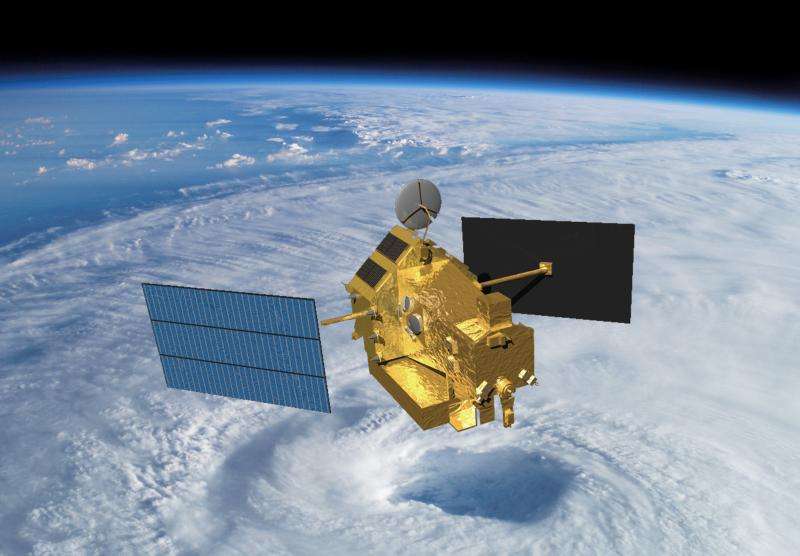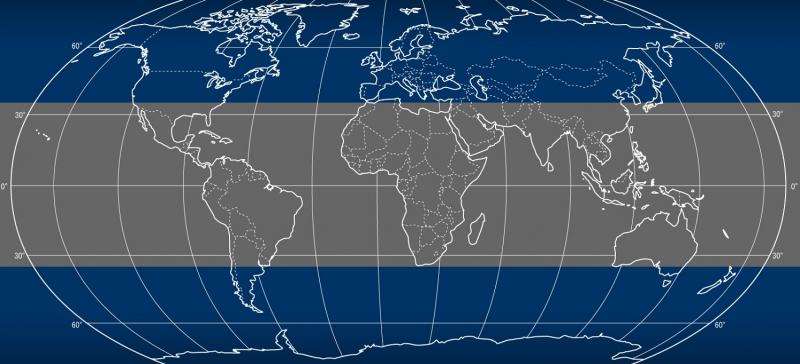Rainfall spacecraft debris to re-enter over tropics

The Tropical Rainfall Measuring Mission (TRMM) spacecraft, a joint mission of NASA and the Japan Aerospace Exploration Agency (JAXA) to study rainfall for weather and climate research, is expected to re-enter Earth's atmosphere on or about June 17.
The U.S. Space Surveillance Network, operated by the Department of Defense U.S. Strategic Command's Joint Space Operations Center (JSpOC), has been closely monitoring TRMM's descent since the mission was ended in April. Most of the spacecraft will burn up in the atmosphere during its uncontrolled re-entry.
The JSpOC will issue periodic predictions of re-entry date and time. Although the exact location of the re-entry cannot be predicted, TRMM's orbit only brings it over the tropics between 35 degrees North latitude and 35 degrees South latitude. Europe, Russia and most of North America and Japan are outside of the potential re-entry area.
Since the beginning of the space age in the 1950s, there has been no confirmed report of an injury resulting from re-entering space objects. The last NASA spacecraft to re-enter was the Upper Atmosphere Research Satellite (UARS) in September 2011. UARS was a much larger satellite than TRMM and NASA received no reports of surviving debris.
NASA's Orbital Debris Program Office estimates 12 components of the TRMM spacecraft could survive reentry. The chance that one of these pieces would strike someone is approximately 1 in 4,200, which is a relatively low chance.
Any sightings of suspected TRMM debris should be reported to local authorities. The pieces of TRMM expected to survive re-entry are made of titanium and are not toxic. Debris could have sharp edges and should not be touched or handled, in the unlikely event someone were to find TRMM fragments.

The value of the new type of precipitation data produced by TRMM is widely recognized by both the scientific community and the operational weather forecast community. TRMM data were used to improve weather models and hurricane track and intensity estimates around the world.
The TRMM dataset will continue to be used for research to improve global weather and climate models. The data meet exacting standards for data preservation, so that future scientists will be able to use the data. The dataset also is being processed to make up one continuous climate data record with the follow-on Global Precipitation Mission (GPM), also a joint project between the U.S. and Japan.
More information: More Information on TRMM: trmm.gsfc.nasa.gov/publication … t_FINAL_20150604.pdf
Provided by NASA





















